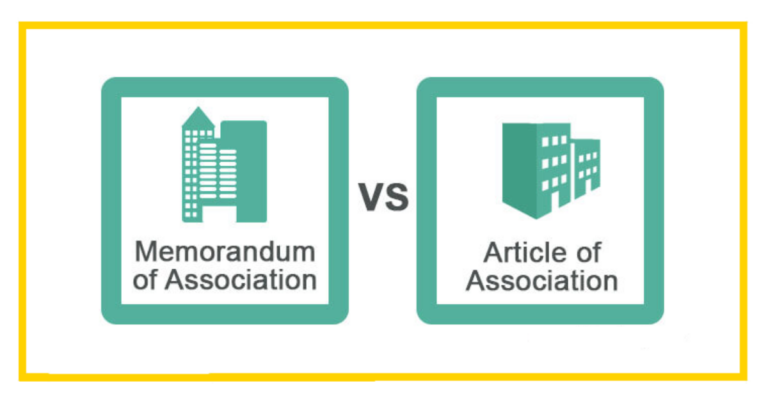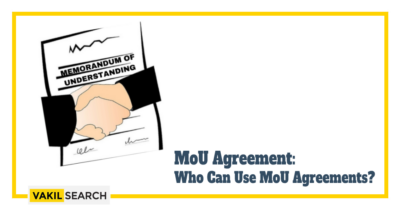Learn every information about how a memorandum works by the experts in the industry and get the most effective tips for the same.
Introduction – How does a Memorandum of Understanding Works?
A written agreement between two or more parties that expresses their intentions about an ordinary course of action is known as a memorandum of understanding. These agreements are utilized in the public sector to coordinate the activity of several government agencies. When two or more businesses intend to collaborate on a project or other enterprise of a similar nature, they will use a MOU. These are often informal papers that are not legally enforceable and lack the level of formality that is included in more lawfully binding contracts. However, when it comes to commercial dealings, they are treated seriously. Memorandums of understanding are more binding than a handshake or a gentlemen’s agreement. They are frequently the initial steps a company takes to form a legally binding contract. In this blog you’ll learn how memorandum of understanding works, what should included in it, reason to have it, legal structure and much more.
How does an MoU Work?
MOUs serve as a road map that outlines the responsibilities and expectations of each participant. The transaction of monetary value does not typically occur during the creation of these documents, which are usually produced during the beginning stages of a partnership or venture. Before going on to the location of contract negotiation, participants working on this agreement get the opportunity to declare their expectations and settle any potential issues that may arise.
The Following Items Should Be Included in An MoU:
Signatures from all parties engaged, the names and contact information of the parties involved, the agreement’s context and purpose or aims, an approximate date when the agreement will become effective, and any other relevant information.
A letter of intent is equivalent to a memorandums of understanding under the legal system of the United States. Managed service providers often employ letters of intent. Both are written agreements, but only one is legally enforceable, and it is implied that the other will be.
A memorandums of understanding is a mutual political agreement between two or more parties in international law. It does not have the same level of formality as a treaty and is not legally binding.
They are widely used in international relations because, in contrast to treaties and the talks surrounding treaties, they can be ratified in a much shorter time and kept secret. MOUs can also be used to change pre-existing legal treaties, provided both parties agree to do so.
The Difference Between a Memorandum of Understanding and An MoU
Another name for a memorandum of understanding is a memorandum of agreement, abbreviated as MOA for short. Essentially, they are the same document form that communicates a shared sense between two or more businesses, government agencies, or other parties involved in the transaction. MOAs and MOUs are frequently executed before a more official, in-depth legal document or agreement are drafted.
On the other hand, a memorandum of agreement is a legally binding document that can be upheld in a court of law, and this is a significant distinction. In most cases, a this document is not a legally binding agreement unless all parties sign it and some form of value, such as money, is traded.
Know more: MOU Format
The Underlying Legal Structure of MoUs
The Indian Contract Act of 1872 is the first legislation to provide a legal basis for MOUs. This paper outlines the conditions that must be met to begin, modify, or terminate a formal contract, and it offers a wealth of information about various contracts and agreements.
The kinds of agreements that can be considered contracts are outlined in Section 10 of the Act, titled “What Agreements Are Contracts.” It says, the agreements belonging to the contract if made via parties’ free consent contemplate the contract, for lawful purposes, and with a lawful object, and are not declared to be void at that very moment.
The Indian Contract Act provides the most pertinent and intelligible explanations of an MOU, while other laws and precedents have been formed throughout the years.
What Do You Hope to Accomplish by Signing a Memorandum of Understanding?
A document outlining an agreement that two or more parties mutually approve and sign is a memorandum of understanding. It is utilized by the parties involved in the negotiation process to lay out the specifics. To put it simply, it is the agreement that comes before the deal.
Is MOU a Legitimate Contract?
In most cases, a this agreement is not legally binding, so it cannot be enforced. It is only considered an agreement document to highlight business links, which ultimately leads to a formal agreement on the contract between two or more parties.
What Are the Reasons Behind the Significance of a Memorandum of Understanding?
These agreements are essential for the parties involved in private and international law and the negotiation spaces of government agencies, non-government organizations, and private corporations.
The Following Is a List of the Benefits of Having an MoU
Objectives that are crystal clear: A memorandums of understanding enables all parties involved to outline their respective and shared goals. A party’s aims and ambitions can be articulated clearly and concisely.
Reduced uncertainty: Memorandums of understanding often helps reduce tension by making the objectives and expectations of all parties very apparent. As a result, the agreement reduces or eliminates potential future disputes.
The basis for the future: Because the conditions and objectives are already outlined in the document for this agreement, you will easily be able to utilize this document as a foundation for a legally binding contract.
Ease of exit: If the party involved in the agreement thinks that their aims or objectives are not properly accomplished, then they have the right to cancel the agreement, as during the MoU stage it is not legally bound. Hence, this makes it easier for the parties to exit.
Conclusion
Hope this blog How does a memorandum of understanding works was helpful!
Vakilsearch experts are here to provide you with the best legal services available at the most affordable prices and offered by experts.
Also, Read:










